“‘[Henry Bech’s] marriage was like the Zionist state they were in: a mistake long deferred, a miscarriage of passé fervor and antiquated tribal righteousness, an attempt to be safe on an earth where there was no safety,’ Updike writes, sizing up Israel better than Bellow ever did through the eyes of a Jew who is accustomed to living in a permanent state of alienation. Reviewing the first Bech volume in Commentary in 1970, Cynthia Ozick accused Updike of dreaming up a false and essentially parodic Jew—but this Jew, for one, found Bech welcome and familiar company.”
 So wrote David Klion, who is working on a book about the legacy of neoconservatism and is a columnist for The Nation, a contributing editor at Jewish Currents, and a “writer for many lefty mags.” His review/reading recommendation on The Complete Henry Bech appeared in the Sept. 5, 2025 issue of Jewish Currents under the heading, “Shabbat Reading List.” For those planning on attending the Roth-Updike Conference in New York City October 19-22—a joint conference of the Philip Roth and John Updike Societies—the timing couldn’t be more perfect.
So wrote David Klion, who is working on a book about the legacy of neoconservatism and is a columnist for The Nation, a contributing editor at Jewish Currents, and a “writer for many lefty mags.” His review/reading recommendation on The Complete Henry Bech appeared in the Sept. 5, 2025 issue of Jewish Currents under the heading, “Shabbat Reading List.” For those planning on attending the Roth-Updike Conference in New York City October 19-22—a joint conference of the Philip Roth and John Updike Societies—the timing couldn’t be more perfect.
“If the Bech stories were merely affectionate sendups of Roth or experiments in whether a goy can channel a Jew persuasively in fiction,” Klion wrote, “they might just be amusing—and for my purposes, dayeinu. But I became fully invested in Bech as a cranky, horny, self-absorbed, self-effacing, skeptical, and occasionally wise antihero, rendered through Updike’s always lyrical prose. Taken together, the stories constitute an extended comic meditation on bookish fame (or semi-fame), inspiration (or lack thereof), and frustration, complete with a fake bibliography and fake reviews from the likes of Alfred Kazin and Ellen Willis.”

 “John Updike’s 1960 novel introduced readers to Harry ‘Rabbit’ Angstrom, perhaps the most iconic character in suburban literature. Harry ‘Rabbit’ Angstrom is a middle-class man who feels there is something missing from his life. The novel follows Rabbit as he flees his suburban responsibilities—his pregnant wife, his job, his entire life—in a desperate attempt to recapture the vitality of his youth. Frank Wheeler, Piet Hanema, Frank Bascombe – these are a handful of the suburban men in the fiction of Richard Yates, John Updike, and Richard Ford. These writers all display certain characteristics of the suburban novel in the post-WWII era: the male experience placed at the forefront of narration, the importance of competition both socially and economically, contrasting feelings of desire and loathing for predictability, and the impact of an increasingly developed landscape upon the American psyche and the individual’s mind. Updike’s genius was in making Rabbit both sympathetic and infuriating—a man whose suburban malaise drives him to make increasingly destructive choices. The novel launched a series that would span four decades, chronicling the evolution of suburban America through one man’s journey.”
“John Updike’s 1960 novel introduced readers to Harry ‘Rabbit’ Angstrom, perhaps the most iconic character in suburban literature. Harry ‘Rabbit’ Angstrom is a middle-class man who feels there is something missing from his life. The novel follows Rabbit as he flees his suburban responsibilities—his pregnant wife, his job, his entire life—in a desperate attempt to recapture the vitality of his youth. Frank Wheeler, Piet Hanema, Frank Bascombe – these are a handful of the suburban men in the fiction of Richard Yates, John Updike, and Richard Ford. These writers all display certain characteristics of the suburban novel in the post-WWII era: the male experience placed at the forefront of narration, the importance of competition both socially and economically, contrasting feelings of desire and loathing for predictability, and the impact of an increasingly developed landscape upon the American psyche and the individual’s mind. Updike’s genius was in making Rabbit both sympathetic and infuriating—a man whose suburban malaise drives him to make increasingly destructive choices. The novel launched a series that would span four decades, chronicling the evolution of suburban America through one man’s journey.”
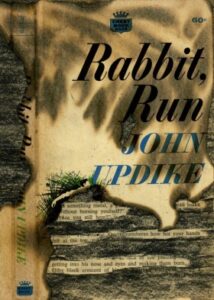 Writing for Festivaltopia, Fritz von Burkersroda recommends
Writing for Festivaltopia, Fritz von Burkersroda recommends 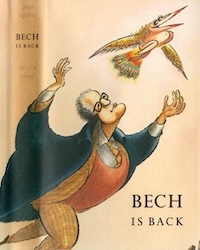 Coming in at #2 was Donald Sassoon’s Becoming Mona Lisa, which traces the path to superstardom of Leonardo da Vinci’s most famous subject/painting—a study that Brown said “suggests that, contrary to popular and scholarly belief, posterity is a peculiarly fickle thing.”
Coming in at #2 was Donald Sassoon’s Becoming Mona Lisa, which traces the path to superstardom of Leonardo da Vinci’s most famous subject/painting—a study that Brown said “suggests that, contrary to popular and scholarly belief, posterity is a peculiarly fickle thing.”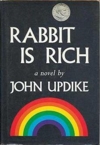 “The third installment of John Updike’s ‘Rabbit’ series finds Harry ‘Rabbit’ Angstrom finally comfortable—or at least financially secure—amid the tumultuous backdrop of 1979’s oil crisis and stagflation. ‘How can you respect the world when you see it’s being run by a bunch of kids turned old?’ the narrator observes, capturing the novel’s eerie contemporary resonance: interest rates and real-estate climbing skyward—and staying there—and a gnawing certainty that the next generation won’t have it quite so good. Updike’s prose transforms the mundane rhythms of middle-class life into something approaching poetry as he excavates middle-class anxiety and success. Rabbit’s car dealership is printing money thanks to the Japanese vehicles he sells, even as his own prejudices and racial anxieties bubble beneath the surface. His son Nelson is adrift, the world seems to be coming apart at the seams and Rabbit’s own biases reflect the tensions of a changing America. The novel won Updike both the Pulitzer Prize and the National Book Award for its devastating precision in capturing what it means to ‘make it’ while watching the ladder get pulled up behind you.”
“The third installment of John Updike’s ‘Rabbit’ series finds Harry ‘Rabbit’ Angstrom finally comfortable—or at least financially secure—amid the tumultuous backdrop of 1979’s oil crisis and stagflation. ‘How can you respect the world when you see it’s being run by a bunch of kids turned old?’ the narrator observes, capturing the novel’s eerie contemporary resonance: interest rates and real-estate climbing skyward—and staying there—and a gnawing certainty that the next generation won’t have it quite so good. Updike’s prose transforms the mundane rhythms of middle-class life into something approaching poetry as he excavates middle-class anxiety and success. Rabbit’s car dealership is printing money thanks to the Japanese vehicles he sells, even as his own prejudices and racial anxieties bubble beneath the surface. His son Nelson is adrift, the world seems to be coming apart at the seams and Rabbit’s own biases reflect the tensions of a changing America. The novel won Updike both the Pulitzer Prize and the National Book Award for its devastating precision in capturing what it means to ‘make it’ while watching the ladder get pulled up behind you.”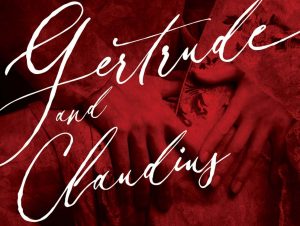 Of Updike’s novel she writes, “Mining, as did [Dorothy] Dunnett, some of Shakespeare’s own sources, Updike relied partly on Saxo Grammaticus’ twelth-century saga of Amlothi for details about the characters on which his Danish king and queen are based.
Of Updike’s novel she writes, “Mining, as did [Dorothy] Dunnett, some of Shakespeare’s own sources, Updike relied partly on Saxo Grammaticus’ twelth-century saga of Amlothi for details about the characters on which his Danish king and queen are based. Sixties’ icon Marianne Faithfull, a singer-songwriter who was considered a major figure in the so-called “British Invasion” of U.K. music to hit the U.S. during the turbulent decade,
Sixties’ icon Marianne Faithfull, a singer-songwriter who was considered a major figure in the so-called “British Invasion” of U.K. music to hit the U.S. during the turbulent decade, 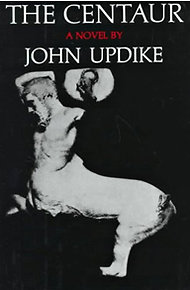 Greatest Books of All Time on Teachers,” and it’s no surprise that John Updike’s 1963 novel, The Centaur, ranks high on the list. His tribute to his father (and teacher), Wesley Updike, did win the National Book Award, after all.
Greatest Books of All Time on Teachers,” and it’s no surprise that John Updike’s 1963 novel, The Centaur, ranks high on the list. His tribute to his father (and teacher), Wesley Updike, did win the National Book Award, after all. “In the small town of Eastwick, Rhode Island, three women — Alexandra, Jane, and Sukie — discover they have magical powers after their marriages end.
“In the small town of Eastwick, Rhode Island, three women — Alexandra, Jane, and Sukie — discover they have magical powers after their marriages end.